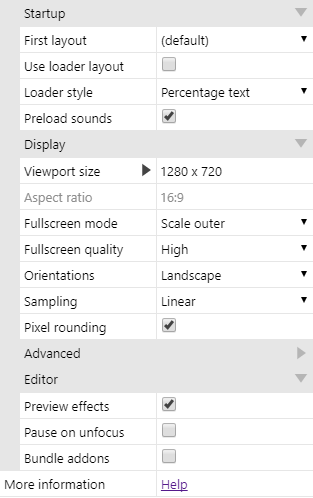

- CONSTRUCT 3 PLUGIN SUPPORT UPDATE
- CONSTRUCT 3 PLUGIN SUPPORT SKIN
- CONSTRUCT 3 PLUGIN SUPPORT ANDROID
1.11.0 Implement batch render for improved performance with multiple Spine objects and instances.Ī number of new updates. 1.11.1 Remove spine instance from batcher when C3 Spine instance calls Release() (e.g. 1.9.0: Fix export issues (change spine-webgl.js to an external runtime script).

Add property RenderQuality (1-0), amount to downsample original Spine size (reduces texture size used also reduces GPU performance requirement, which is usually less of an issue.).Add expressions TextureWidth, TextureHeight (texture size used to display Spine).

CONSTRUCT 3 PLUGIN SUPPORT UPDATE
Update to version 1.8.0 to add options for better pixel art renders for the aboves examples and faster/more efficient skeleton instances. If you run into bugs, please leave issues on the github site here: If you try it out on Construct, let us know, post your results.
CONSTRUCT 3 PLUGIN SUPPORT SKIN
It includes skin changing and mesh deforms.
CONSTRUCT 3 PLUGIN SUPPORT ANDROID
Android performance is more of a challenge, only a few characters at 60fps, something to review. Performance is reasonable on the desktop systems I have tested on and recent iPhones (50+ Spine characters with 60fps). For simple animation playback, pause, switch, it works and looks pretty good with a default mix. The C3 Spine plugin we (Igor and Mikal) developed has been updated with some new features (default animation mix and animation speed). Here's the C3 forum post with more details (also copied below) It's based on the Spine-TS runtime and rendering the Spine animation to a texture which C3 can then use to integrate into a C3 Spine object with Z ordering, position, scaling, rotation, etc. I've contacted Scirra via email, we'll see if there are SDK side changes on the horizon that will make this better.For construct 3 users, we updated the basic Construct 3 runtime plugin with a few more features it's as good a time as any to release and for C3 devs to work with it. It's entirely unclear how this can be done in a way not to burden the user with a multi-step workflow. The Spine format consists of at least 3 files (JSON/binary. Everything needs to be done manually, by the user, to provide an instance with e.g.

I've now looked into this for a few days.


 0 kommentar(er)
0 kommentar(er)
